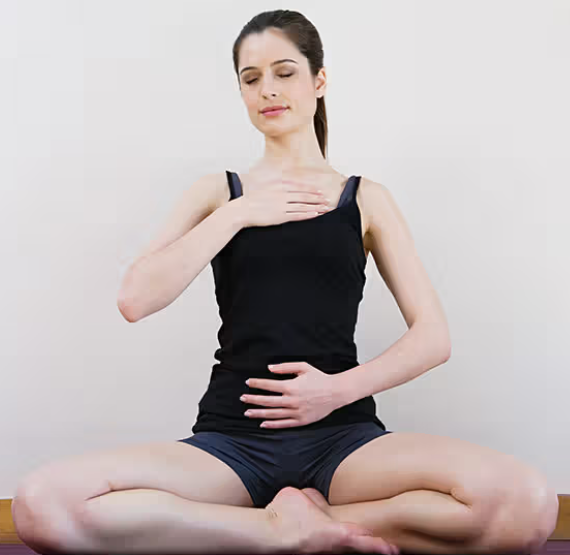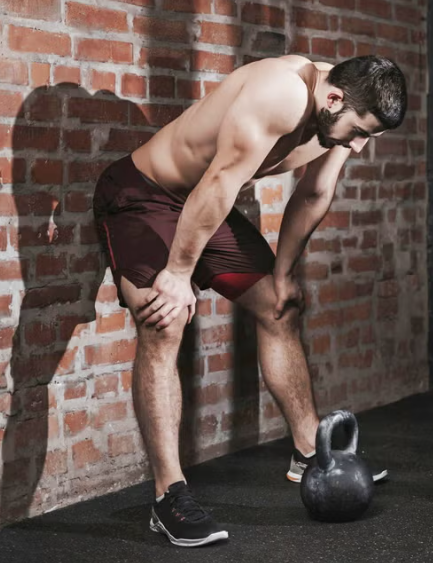
How Breathing Can Influence Shoulder Pain and Movement
Shoulder pain has become a common issue for many people in today’s world. With long hours spent sitting, texting, and staring at our phones, it’s no surprise that the modern lifestyle is contributing to an increase in shoulder discomfort. As a coach working with powerlifters, weightlifters, strongmen, and individuals simply looking to feel better, I’ve seen firsthand how these activities impact shoulder health. Over time, I’ve learned that addressing shoulder pain requires a more holistic approach than just focusing on the joint itself.
One of the most impactful theories I’ve encountered in my career is the “Joint by Joint” theory by Mike Boyle and Gray Cook. This theory suggests that different joints in the body require either mobility or stability to function properly. When we lose the required mobility or stability, it disrupts the whole system. This became clearer to me after reading Thomas Meyer’s Anatomy Trains, where he explains the concept of fascial chains that connect our body from head to toe. A problem in one area can affect the entire system, much like a fly disrupting a spider’s web.
In the past, when someone experienced shoulder pain, I would focus on restoring proper movement around the joint itself, using exercises like thoracic mobility drills and scapula stabilization. However, I’ve since realized that shoulder pain is often linked to issues elsewhere in the body, especially the hips and feet. For example, many people lack the necessary 65 degrees of extension in their big toe, which is vital for proper walking mechanics. Without addressing these foundational movements, shoulder pain may persist.
What I’ve also learned is that most people have poor breathing patterns, and believe it or not, how we breathe plays a significant role in proper movement. For the body to move well, we need stability in the spine. When the spine lacks this stability, the body compensates by tightening up distal joints, like the shoulders, in an attempt to provide that stability.
Stretching alone will not resolve this issue. If we focus only on stretching tight muscles without addressing the root cause—lack of stability—the tightness will return. In fact, improving mobility without correcting stability can even increase the risk of injury. The key is to identify the stability issue first, then stretch and strengthen the right muscles to lock in the correct movement patterns.
For many shoulder pain sufferers, particularly when it comes to overhead movements, poor breathing is often the main culprit. Breathing deeply is crucial for stabilizing the spine and properly mobilizing the ribcage. If the muscles around the ribcage are tight, they can restrict shoulder movement. To begin addressing this, it’s important to release the diaphragm.
In one of my techniques, I use an Acumobility ball and place it under the bottom rib. By applying pressure and having the client take a deep breath in while engaging the diaphragm, we can help release the tension in this area. After 5 reps on each side, you should notice it becomes easier to take a deep breath.
Once the diaphragm is released, practice proper breathing techniques. I like the 90/90 position for this exercise, where you lie on your back with your feet on a wall, knees and hips at 90-degree angles. Begin by inhaling deeply, filling the lower back, stomach, chest, and upper back. This should take about 6 seconds. The exhale should be half that time, fully releasing the air while pressing the lower back into the floor.
After improving breathing and stabilizing the spine, it’s time to integrate these new patterns into shoulder movement. From the same 90/90 position, place your elbows at shoulder height, bent at 90 degrees, with your hands and forearms on the floor. Keeping your arms in contact with the floor, slowly slide your hands overhead until your elbows lock out. Perform a full inhale, then exhale completely before returning to the start position. Repeat for 5-8 reps.
To reinforce this movement pattern, I like using kettlebell bottom-up carries, which add stability to your gait and reinforce full-body stabilization. Additionally, it’s important to address hip mobility. If you have access to an assessment, it will help pinpoint any hip mobility deficits. If not, mobilize the hips in all directions to ensure balanced movement.
For a great follow-up exercise, try a half-kneeling or split-stance bottoms-up press. This engages full-body stabilization and helps integrate everything you’ve worked on. There’s no one-size-fits-all solution, but with consistent assessment and reassessment, you can determine which exercises work best for you and your clients.
The key takeaway is that shoulder pain, especially during overhead movements, often has roots in poor breathing and spinal stability. By improving breathing mechanics, stabilizing the spine, and addressing overall movement patterns, you can effectively alleviate shoulder pain and improve mobility.




